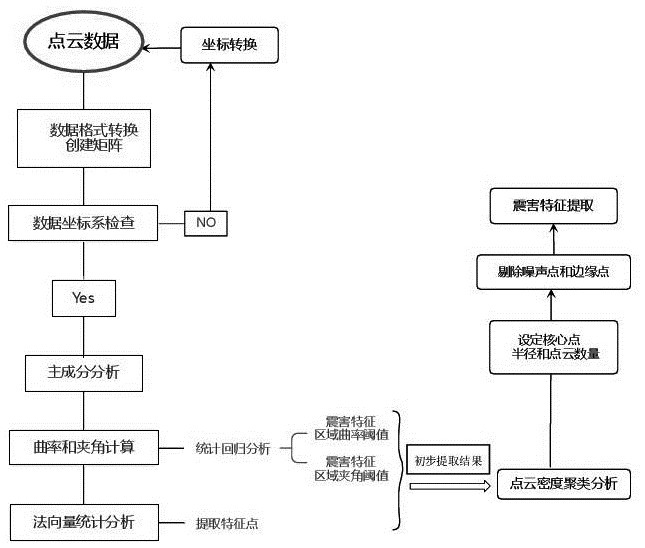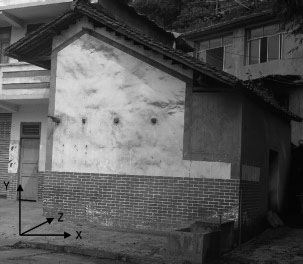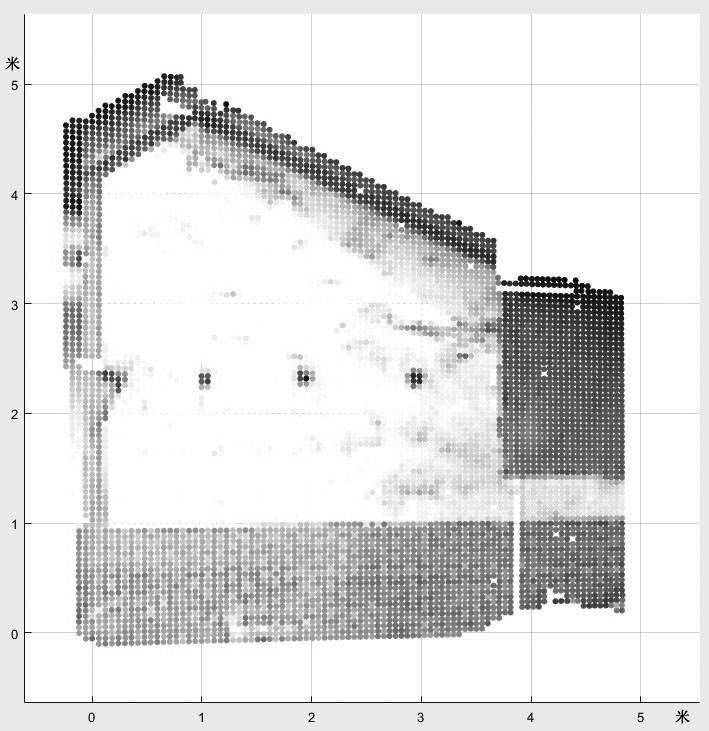Building earthquake damage information detection and extraction method
A technology of information detection and extraction methods, applied in the fields of instruments, character and pattern recognition, data processing applications, etc., can solve the problems of personal safety hazards for on-site scientific research staff, omission of building deformation information, and difficulty in identification, etc., to eliminate artificial Subjective interference factors, reducing the risk of secondary injury, reducing the effect of labor
- Summary
- Abstract
- Description
- Claims
- Application Information
AI Technical Summary
Problems solved by technology
Method used
Image
Examples
Embodiment
[0080] Such as Figure 18 In the survey of the earthquake area in August 2013, Trimble GX200 3D laser scanner (see Table 4 for technical specifications) was used to collect point cloud data of post-earthquake buildings in Ⅶ, Ⅷ, and Ⅸ degrees (such as figure 1 ), involving a total of four types of building structure types of houses, which are brick-wood structure, brick structure, brick-concrete structure, and frame structure. In the process of data collection, in order to improve work efficiency, each building adopts angle scanning, that is, the front and side of the building are collected at the same time; in order to reduce coordinate errors, the form of relative coordinates is adopted, that is, the point where the 3D laser scanner is located is Control point coordinates.
[0081]
[0082] Table 4: Trimble GX200 Specifications
[0083] The present invention uses ground three-dimensional laser scanning data to detect and measure damage to buildings, based on the analysis...
PUM
 Login to View More
Login to View More Abstract
Description
Claims
Application Information
 Login to View More
Login to View More - R&D
- Intellectual Property
- Life Sciences
- Materials
- Tech Scout
- Unparalleled Data Quality
- Higher Quality Content
- 60% Fewer Hallucinations
Browse by: Latest US Patents, China's latest patents, Technical Efficacy Thesaurus, Application Domain, Technology Topic, Popular Technical Reports.
© 2025 PatSnap. All rights reserved.Legal|Privacy policy|Modern Slavery Act Transparency Statement|Sitemap|About US| Contact US: help@patsnap.com



